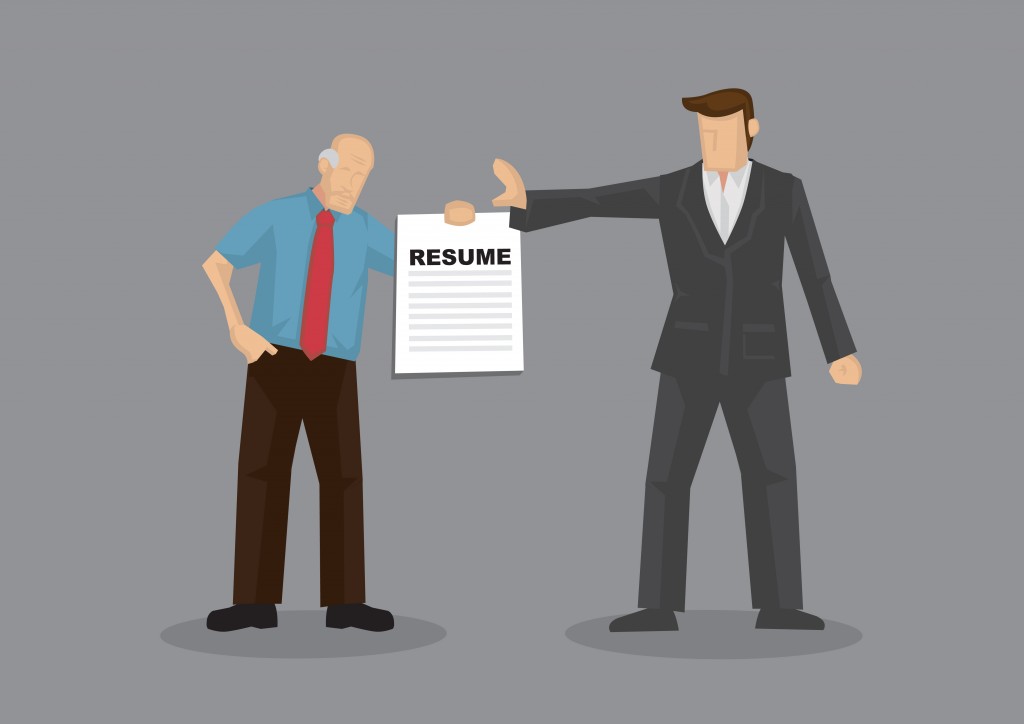

It may be illegal, but age discrimination exists in the hiring process, and the pace of technological change has only intensified the problem. Today’s hiring managers often assume that workers over age 40 will be too expensive and won’t have the technological savvy or adaptability needed to add value to the modern workplace.
The solution? Construct your resume with the assumption that hiring managers will have reservations about hiring a mature worker. Your resume needs to convince them that the value you will bring to their organization should override all their concerns.
Article contributed by LiveCareer.
- Direct attention to your skills.
The best resume-writing strategy for the over-40 worker is to obscure your age and emphasize your potential value. Ditch the chronological structure and reorganize your resume in a way that prioritizes skills and accomplishments.
Begin by looking through your resume for your most important career achievements and most marketable abilities. Collect these and list them under new categories with headings. Your Work History section should consist of a simple list of titles, employers, and dates that will take up a small amount of real estate at the end of your resume.
Skip the outdated “objective” section and instead begin your resume with a summary that highlights your most relevant work experience and educational background. This summary can be customized for each job you seek.
Remember that recruiters will likely spend as little as 20-30 seconds scanning through your resume during the initial filtering phase. A new organizational structure can make sure that you are not labeled as “overqualified” and filtered out immediately. And be concise; discipline yourself to a two-page maximum.
- Eliminate information that dates you.
Your resume should reflect a maximum of 10-15 years of experience; you do not need to mention your entire career. For example, let’s say you’ve worked for the same company for 32 years. In the past 15 years, you’ve held three different titles. Include only the three most recent positions and dates on your resume. Eliminate all the job titles you had prior to that. If there is an applicable skill or accomplishment from those earlier years that relate to the current opening, then you can incorporate it into your summary.
Limit personal information as much as possible. Never include your date of birth and you can also leave off graduation dates. If the name of your school has changed since you graduated, then update it.
Eliminate outdated acronyms and professional terminology, and especially references to outdated technology. Do some research to find out about the latest terminology for common work functions in your field. For example, if you work in human resources, you may want to change references to “recruiting” to “talent acquisition.”
Make sure the sections are as concise as possible by selecting the best, most relevant elements of your experience to highlight. Use active verbs that focus on the value you can bring to your new role: “cut budget, improved sales.” Use a legible font and lots of white space.
- Create a modern image.
From the font you choose to organization and layout to your contact information, your resume should use every opportunity to combat the impression that you and your skills are outdated. Online guidance for tackling the writing of a resume is bountiful, of course, but here’s the nuts and bolts on what you need to do to modernize things a bit.
Update your contact information by eliminating fax numbers and seldom-used landlines. An “old school” email address from AOL or yahoo may date you. Set up a professional Gmail or Outlook. Don’t include your birth date or graduation date in your new email address. If your full name is taken, add something to do with your profession, such as “johnsmithmarketing@outlook.com.”
Increase your online presence. If you do not have them, create Facebook, LinkedIn and Twitter accounts, and consider launching a professionally focused website; this will also help you with networking. At a minimum, make sure your contact information includes your LinkedIn profile URL and make sure to customize it (YouTube and Google have how-to’s that can help with this).
Consider joining—and listing memberships—in professional associations. Including participation in recent technology training or professional initiatives within a professional organization is a great way to emphasize that you are at still in the vanguard of your profession.
Typically, a resume might not mention familiarity with technology that is widely used within your field. But for older workers, it may pay to do so to combat the assumption that your tech skills are not up to date.
Finally, try to emphasize qualities you possess that are commonly associated with younger workers. Have you been a “risk taker” or “change agent” in your previous roles? If so, highlight these aspects of your career in your summary with concrete examples. Above all, remember that your goal is to direct employers’ attention to your skills, and not your age!
LiveCareer offers a treasure trove of materials to aid jobseekers in their journeys towards dream jobs, including tons of examples of how to approach resume writing, plus guidance on interviewing and cover letter writing. Drop by today!
Leave a Reply